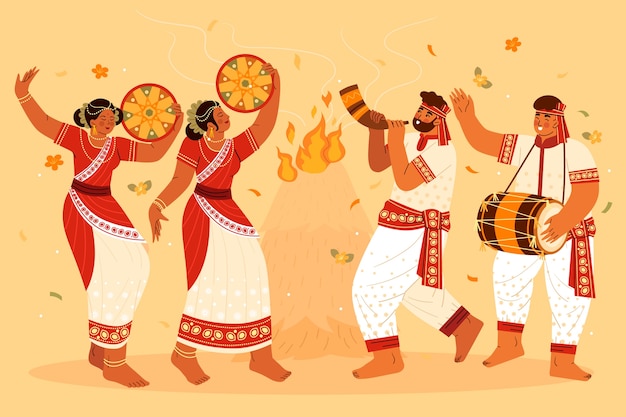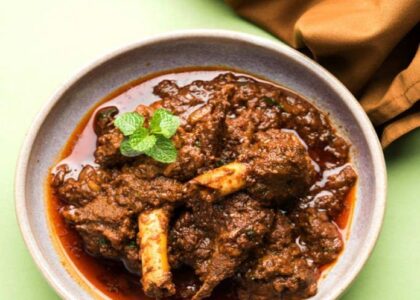Assam, located in the northeastern part of India, boasts a culture that is rich in diversity, history, and tradition. The culture of Assam is a unique blend of various ethnicities, languages, and influences, which sets it apart from the other states in India. From its festivals and music to its cuisine and customs, Assamese culture has its own distinctive identity. In this blog, we’ll explore what makes Assamese culture stand out compared to the rest of India.
1. Linguistic Diversity and the Assamese Language
One of the most prominent aspects of Assamese culture is its language. Assamese, an Indo-Aryan language, is the official language of Assam and serves as the primary means of communication in the state. What makes it unique is that, while Assamese is spoken by the majority, Assam is also home to a multitude of ethnic groups who speak different languages and dialects. These include Bodo, Khasi, and several indigenous languages.
What sets Assamese apart is its influence on literature and arts, with the earliest works of Assamese literature dating back to the 14th century. The language is closely tied to the region’s identity, often seen as a symbol of unity among the diverse ethnicities that reside in Assam.
2. Festivals: Celebrating Nature and Agriculture
One of the most unique aspects of Assamese culture is its celebration of Bihu, an agricultural festival that marks the Assamese New Year and the arrival of spring. Unlike festivals in many other parts of India that are tied to religious events, Bihu is a celebration of nature, harvest, and fertility. It is a time when Assamese people honor the land, the seasons, and the cyclical nature of agriculture.
Bihu consists of three distinct festivals: Rangali or Bohag Bihu (April), Kangali or Kati Bihu (October), and Bhogali or Magh Bihu (January). Magh Bihu marks the conclusion of the harvest season, Rongali Bihu celebrates the Assamese New Year, and Kati Bihu honors the ongoing harvest season.
3. Music and Dance: Traditional Rhythms of Assam
Music and dance form the soul of Assamese culture, with a variety of traditional performances that set Assam apart from other regions in India. One of the most famous dances, the Bihu dance, is performed during the Bihu festival and showcases the energetic and joyful spirit of the people. Dancers, dressed in traditional attire, perform intricate footwork while clapping and using rhythmic movements to express joy and celebration.
Another unique dance form is Sattriya, which originated in the monasteries of Assam and is a classical dance that combines spirituality and storytelling through intricate movements. The dance is closely tied to the Vaishnavite tradition, and its performances often include themes from Hindu mythology. It has been recognized as one of India’s classical dance forms.
4. Cuisine: A Distinctive Culinary Identity
Assamese cuisine stands out for its simplicity, freshness, and use of local ingredients. Rice is the staple food of Assam, and it is paired with fish, meat, and an assortment of vegetables. The unique aspect of Assamese food is its use of minimal oil and spices compared to many other Indian cuisines, relying instead on the natural flavors of the ingredients.
One of the most famous dishes is Masor Tenga (sour fish curry), made with local fish like Rohu, flavored with tamarind, tomatoes, and mustard seeds. Another distinct dish is Pitika, a mashed dish often made with potatoes, eggplant, or fish. Traditional Assamese meals are also typically accompanied by Khar, a dish made with raw papaya, pulses, and alkaline water from the ash of a special plant. These unique preparations give Assamese cuisine a distinct flavor profile that sets it apart from other regional cuisines in India.
5. Handloom and Craftsmanship
Assam is renowned for its exquisite handwoven textiles, especially its silk. The state is home to two types of unique silks—Muga and Eri—that cannot be found elsewhere in India. Muga, a golden silk, is produced by the Antheraea assamensis moth and is primarily used to make traditional Assamese garments such as mekhela chadar (the traditional attire for women). Eri silk, made from the Eri silkworm, is softer and more sustainable, often used to make quilts, shawls, and garments.
These textiles represent Assamese artistry and craftsmanship, with intricate designs and patterns that reflect the region’s cultural heritage. Handloom weaving is not only an art form but also an important part of Assam’s economy, and these textiles are often used in various traditional ceremonies and festivals.
6. Traditional Architecture and Temples
The architecture in Assam is unique in its blend of indigenous and Hindu influences. One of the most notable examples of Assamese architecture is the Satras—the monastic institutions that also functioned as cultural centers. These structures are typically built in a traditional style, with wooden columns, pitched roofs, and intricate carvings.
Assam is also known for its temples, with the Kamakhya Temple being one of the most revered in India. Situated on the Nilachal Hill in Guwahati, the Kamakhya Temple is an important pilgrimage site for Hindus and has a unique structure that differs from typical North Indian temples. The temple’s architecture and rituals are deeply rooted in Assamese culture, particularly the practice of Tantrism.
7. Indigenous Tribes and Traditional Practices
Assam is home to numerous indigenous communities, each with its own distinct customs, languages, and traditions. The Bodos, Misings, and Karbis are just a few of the many tribes that call Assam their home. These communities have preserved their traditional practices, including unique forms of music, dance, and craft, which are distinct from other regions in India.
The Bodo people, for example, have their own language, clothing, and culinary traditions, while the Mising tribe is known for its distinct weaving techniques. The indigenous tribes of Assam play a vital role in maintaining the state’s cultural diversity, and their customs continue to thrive in the modern era.
Assam’s culture is a blend of tradition, nature, and history, making it unique among India’s states. Its diverse festivals, distinctive cuisine, rich musical heritage, traditional crafts, and the deep connection to the land all contribute to an identity that is unlike any other in the country. Whether it’s the joyful Bihu festival or the golden threads of Muga silk, Assam’s cultural richness offers something for everyone to discover and appreciate.









